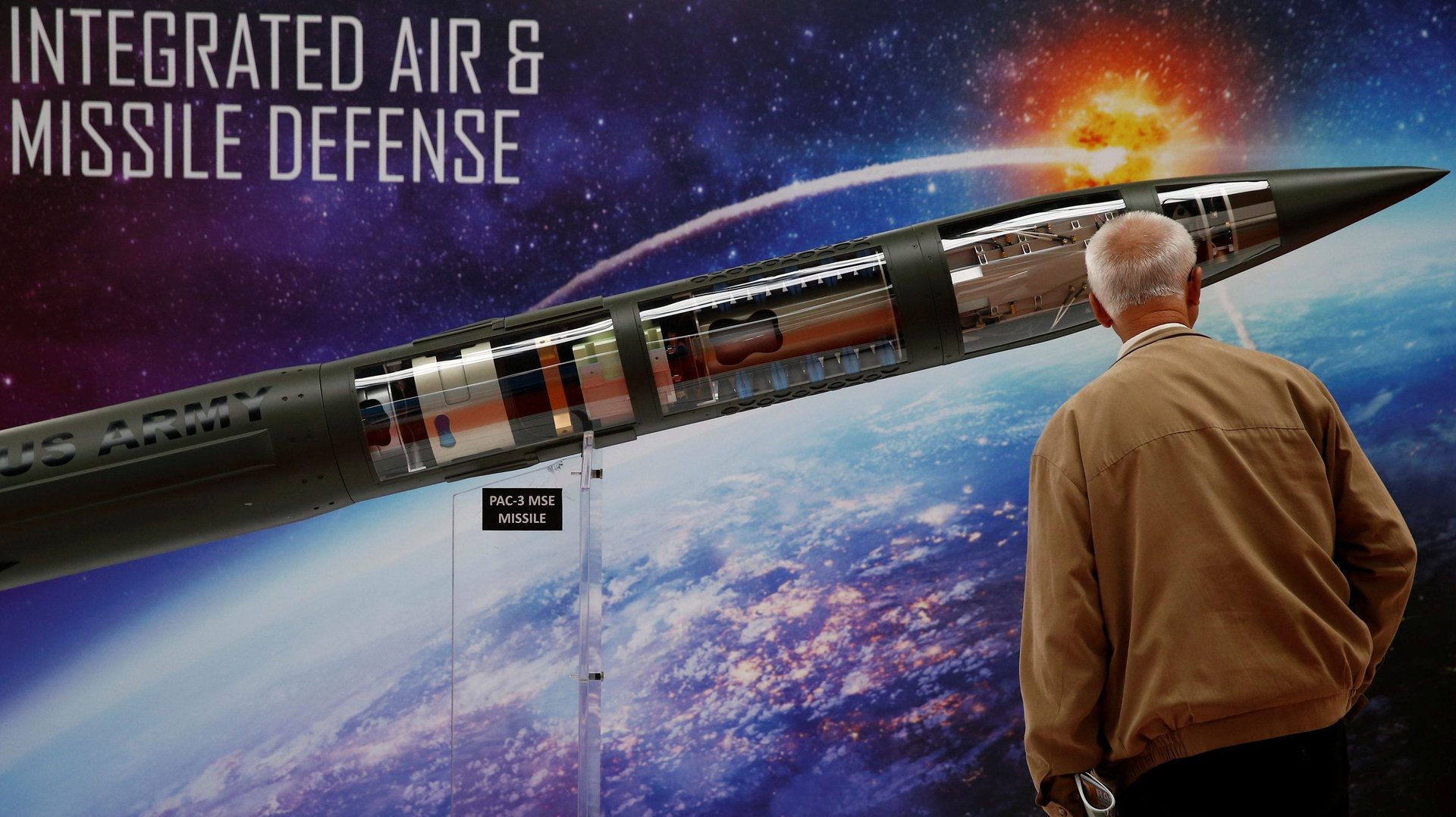US defense giants show how American capitalism fails taxpayers
As big US companies close their books for 2018, the top beneficiaries of Donald Trump’s tax cuts are becoming clear—the firms that reported big jumps in profits rewarded investors with dividends and more than $1 trillion in share buybacks. That means that corporate benefits from the tax bill mostly flowed to the wealthiest Americans, just like the benefits of the personal tax cuts.


As big US companies close their books for 2018, the top beneficiaries of Donald Trump’s tax cuts are becoming clear—the firms that reported big jumps in profits rewarded investors with dividends and more than $1 trillion in share buybacks. That means that corporate benefits from the tax bill mostly flowed to the wealthiest Americans, just like the benefits of the personal tax cuts.
That is certainly true for the US’s big defense contractors. Lockheed Martin, for example, earned $5 billion last year, up more than 150% from the year before; General Dynamics generated net earnings of $3.3 billion, up 15% from the year before; Northrop Grumman made $3.2 billion, up 13% on 2017; and Raytheon recorded $2.9 billion in profit for the year, up more than 40% on the previous year.
These companies all embarked on big share buyback programs spurred in part by the “Tax Cuts and Jobs Act” passed by the Trump administration in late 2017. Lockheed returned $3.8 billion in cash to shareholders in 2018, $1.5 billion of it in stock buybacks and the remainder in dividends, executives said during an earnings call. General Dynamics gave back $2.9 billion for the year, $1.8 billion via buybacks. Both Northrop Grumman and Raytheon bought back $1.3 billion of their shares last year. This buyback spree has been one of the biggest boosts to the stock market otherwise spooked by trade wars and political uncertainty.
Some argue that companies whose tax rate plummeted as a result of the legislation should pass the benefits to employees and communities where they do business, whether via bonuses or new hires, increased wages or skills training, or investments in local projects. Trump seemed sincerely to believe that the tax reform bill would spur them to do just that.
That argument becomes even stronger for the biggest US defense contractors. They are a special case because of where their profits come from in the first place. Lockheed Martin earns about 60% of its annual revenue from sales to the US Department of Defense, for example, and General Dynamics about half. The Trump administration has pledged to boost defense spending in the years to come.
The Department of Defense is, of course, funded by US taxpayers. So Americans pay taxes that fund most of Lockheed’s business, the company earns profits off from that business, pays a reduced tax rate under the new tax bill, and then shares those benefits with shareholders. Only around half of American households own stocks, and the richest 10% of Americans own more than 8o% of shares by value.
Lockheed will save between $500 million to $600 million a year under the new tax rate, analysts estimate. Lockheed said after the bill was passed that it would invest $460 million in training, scholarship funds and venture capital, but much of that is spread over several years (pdf). And despite the tax windfalls, it and other defense contractors have warned investors (paywall) that future financial results could be dented by political turmoil, higher material costs, and trade frictions. This could test their resolve in devoting funds to priorities other than keeping shareholders happy.
Not one of the analysts during Lockheed’s hour-long earnings call last week asked about employees, salaries, hiring, or employee training. Instead, nearly every question was about cash flow, profit margins, revenues, and “pricing pressure” on Lockheed’s products like the F-35 aircraft. That’s what stock analysts are supposed to do, of course—focus on the concerns of the group they represent, investors. But who is looking out for the rest of the country?